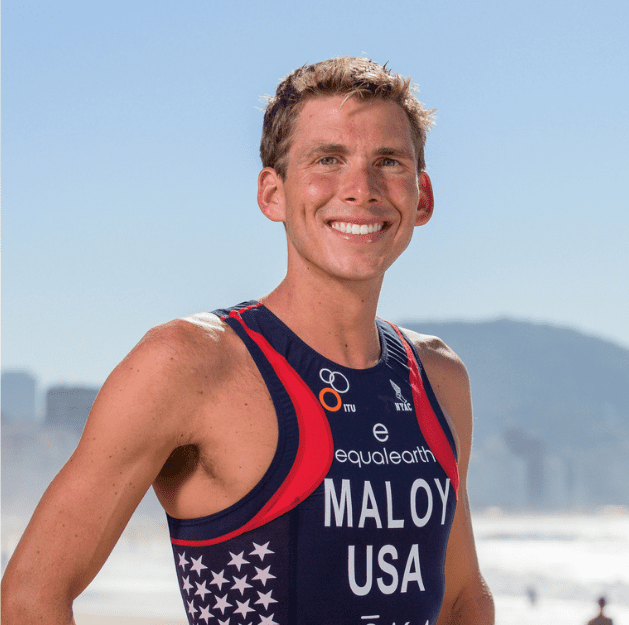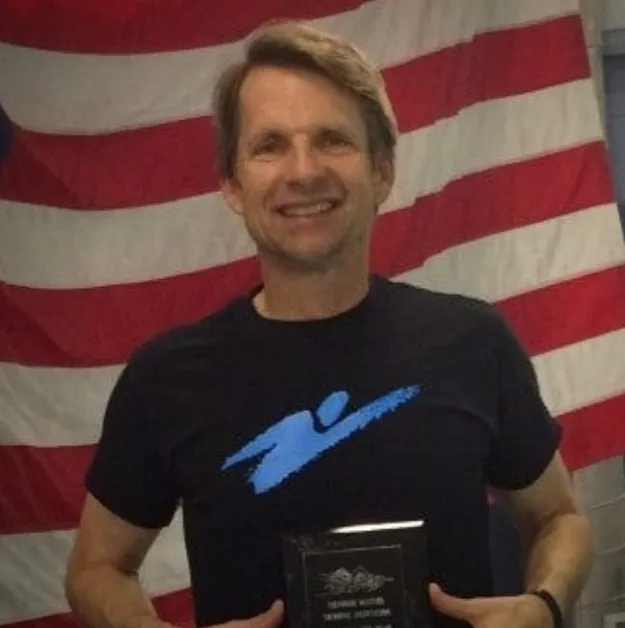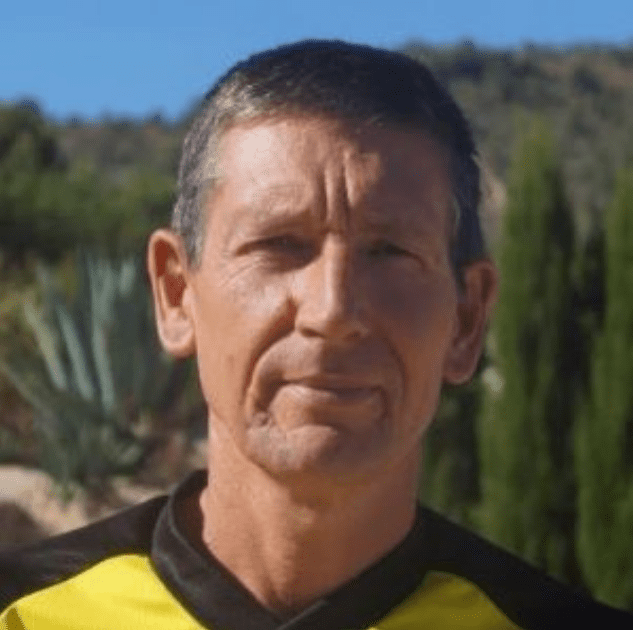This is part 4 in a series of blog posts where we ask important questions to successful coaches in the Vasa community. Here are their answers to an important question:
What are the typical fears triathletes and swimmers face when swimming in open water? What are three actions they can take to overcome those fears?
Olympian Joe Maloy:
“Swimming in the open water can be disorienting for any swimmer! It’s an uncontrolled environment that provides completely different feedback than swimming in a pool.
Fear is just one of the many emotions an athlete must learn to control and use to his/her advantage if he/she wants to be successful. Our emotions are wonderful tools but terrible masters. To use the fear and anxiety surrounding open water swimming to one’s advantage, I’d recommend the following steps:
1) Accept the things that are out of your control. All the worrying in the world will not make the choppy water calm down, bring the buoys closer, or draw a line on the bottom of the ocean for you to follow. Accept the reality that open water swimming is still swimming!
2) Direct your thoughts to the things that are under your control. Your challenge is still to employ the talents you’ve trained to move through that liquid medium. Focus on the familiar actions which are 100% under your control. Focusing on what you can control reduces anxiety and helps you take control of those emotions.
3) Remind yourself that emotions are just energy that needs to be channeled. Open water swimming is a little bit wild. See the beauty in that difference. Be grateful that you have the skill and ability to interact with the world in such a unique way. Your swim won’t be perfect, but neither is life! Do your best, and don’t let fear keep you on the sidelines.
Notable exception: Unless there are sharks…in which case you should reason that the pool or the Vasa is, in that case, the better option!”
Coach Dan Daly:
“Many of the athletes I work with are fearful of open water, completing the required training to complete the racing distance, and not getting hurt in the process. Swimmers can increase their comfort in the open water by spending a larger portion of their training in the open water versus the pool. The open water imposes unique demands that require experience and practice. Smaller training races can also improve comfort levels with the pressure and chaos of racing in larger groups.
As far as the training goes, it’s important to set realistic goals based on your training background, availability to train, and experience racing comparable distances. Smaller, more achievable goals, before or leading up to larger ones, can give you the confidence and experience to tackle greater feats.
While it’s impossible to eliminate injury, it can be reduced with a smart plan, personalized for the athlete, that accounts for their training history, current fitness, stress load, and ability to recover. Dryland strength training is the secret weapon in maintaining muscular balance, joint health, and the strength to endure longer submaximal efforts.

Coach Eric Neilsen:
“Swimming in a triathlon or open water race can be a contact sport, and bumping into another swimmer can be problematic. One of the simplest things to do in practice is to swim side by side for 25 meters. Assuming that goes well, swim side by side and bump into each other a few times to practice contact. Then progress to practicing this on your next open water swim.
Not being able to navigate and/or touch the bottom can create anxiety. A great way to reset before resuming your freestyle stroke is having a “go-to” backup stroke (breaststroke or backstroke). You can do it for a few moments if you get anxious. Breastroke makes it easier to navigate. If you choose backstroke, you can get plenty of air.
For those anxious about not being able to see the bottom, try swimming with your eyes closed in the pool for a few strokes. You actually might find it peaceful and more rhythmic.”
Lesley Paterson, XTERRA World Champion & coach:
“HAVING A PANIC ATTACK AT THE START.
Athletes must simulate race situations, so get a large group of people to practice race starts so that nothing is unknown. Desensitize.
GETTING DUNKED UNDER DURING THE RACE AND HELD UNDER.
Practice holding your breath while swimming so your body can get used to less oxygen for small periods. I do lots of breath-holding exercises – breathing every nine strokes and so on to help with this.
GETTING GOGGLES KNOCKED OFF AND NOT BEING ABLE TO SEE.
I wear two caps. Put on the first cap, then put your goggles on, and finally, the second cap on top to hold the goggles in place. This works great.”
Coach Martin Hill:
“Three actions, or points to remember, for accepting and conquering the fear of water – pool or open water:
- You are not alone
Fear of (open) water swimming is common. Athletes at all levels have blips, so no one should feel alone in the matter. Remember and realize that you are not alone. It’s human nature but is not often mentioned. This can help a lot to overcome initial doubts or fears.
- Know what triggers your fears and mentally rehearse the correction.
The cause of fear varies, from cold temperatures, the unknown (depth, fish… monsters, etc.), water conditions, the mass of people, and any previous events of uncertainty. The consequence of this fear is often a panic attack and, very quickly thereafter, breathing issues. Both are largely linked to hyperventilating, for which the only correction is the need to slow or stop to reestablish a regular breathing pattern.
For athletes to conquer their fears, they need to confront them, not hope they will never happen. It also doesn’t mean just getting in the pool or open water and swimming regularly, it means spending time reflecting on the fear and mentally rehearsing the corrective measures needed to control the situation. If you don’t know what triggers your fear or how to correct it, it can regularly creep up on you and result in longer periods to settle. Hope for the best. Prepare for the worst.
- Manage the initial effort and thought processes.
Along with mentally preparing and rehearsing, swim warm-ups or race starts should be easy, and the thought processes kept simple – sticking to a breathing pattern and pushing water back. It is easy to start too fast and overcomplicate the processes by trying to control everything! Both impact your breathing efficiency, which results in inadequate oxygen utilization, then fear and panic. As experience is gained, the effort at the start can be increased, but the simple process of thoughts should always be maintained; adults tend to want to think too much, which muddles things.”
Want to Ask A Swim Coach How to Swim Faster? Just submit your question(s) to Vasa Customer Service.
About the Coaches:
Joe, Dan, Eric, Lesley, and Martin are among the World’s most respected coaches & athletes from the Vasa community. They also contribute to our Four Keys to Fearless Open Water Swimming ebook. It’s excellent, it’s useful, and it’s FREE! Click here to get your free copy.
 Joe Maloy
Joe Maloy
Olympic & former World Champion Triathlete
and USA Triathlon Coach
 Lesley Paterson
Lesley Paterson
Braveheart Coaching
XTERRA World Champion (3X)
Co-Author of the best-selling book, “The Brave Athlete.”
braveheartcoach.com
 Daly Daly, CSCS
Daly Daly, CSCS
Dryland Strength & Conditioning Coach
www.traindaly.com
 Eric Neilsen
Eric Neilsen
Head coach, FAST Masters
Masters Swimming & Multisport Coach
coachericneilsen.com
 Martin Hill (Based in Alicante, Spain)
Martin Hill (Based in Alicante, Spain)
ASA Swim coach, Trisutto Certified coach
UK Strength & Conditioning coach, BTF L3 coach
mastersoftri.com

